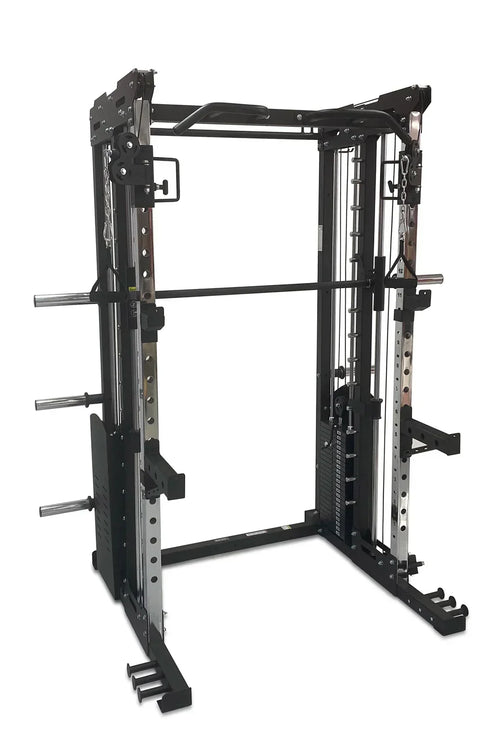How Important is Strength Training for Women?
“Strength training is all about heavy lifting and will make me bulky”. That’s actually incorrect.
Strength training does involve lifting weights, however, if that’s not your vibe you can choose to just use resistance bands or even just your body weight when partaking in the exercises.
There is a common misconception where women think strength training will make them bulky however due to the lack of testosterone in our bodies, it is more likely that you’ll increase in body strength over size.
Now let’s dive deeper.

What is strength training?
Strength training incorporates weight, resistance and muscular training. These all involve the physical movement in which you’re building muscle mass, strength and endurance using either your body weight or equipment (such as weights and resistance bands).
There are many different types of strength training, such as:
-
Muscular hypertrophy: using moderate to heavy weights in order to enhance muscle growth.
-
Muscular endurance: completing high reps using lighter weights or body weight to increase the muscles’ ability to endure exercise for a longer period of time.
-
Circuit training: full body conditioning that involve little to no rest between exercises.
The ones listed above are the 3 most common types of strength training, however for experienced athletes there are also:
-
Strength training: using heavy weights and completing low reps in order to improve overall body strength.
- Power training: typically performed to enhance explosive movements through the combination of speed with power output.
5 Benefits of Strength Training For Women
Strength training comes with many benefits, especially for women. There are so many benefits however here are 5 that we think are important.
As you start to build muscle, you also increase your metabolic rate. This is due to muscles being more metabolically efficient in comparison to fat, therefore helping you burn more calories at rest.
Performing daily tasks and routine exercises with stronger muscles will reduce your chances of fatigue and the likelihood of injury. Also unlike men, women won’t necessarily gain significant size through strength training. This is due to the reduced levels of testosterone in women, whereby body strength will increase, along with muscle tone and definition before body size.
Similar to improving body strength, building bone density will also help to reduce your risk of injury. This is due to the temporary stress placed on your bones which send signals to your cells to rebuild them stronger. Strong bones also reduce your risk of fractures and developing osteoporosis (which is highly common in women compared to men).
Cardiovascular health can be improved through regular weight training as it contributes to decreasing blood pressure, lowering LDL cholesterol, increasing HDL cholesterol and improving blood circulation within the body. The risk of diabetes can also be reduced as glucose is being removed from the blood and sent to muscle cells instead.Therefore blood sugar management is improved.
Exercising helps to produce mood-improving neurotransmitters such as endorphins, dopamine, norepinephrine and serotonin. These can lead to you feeling more confident and enhancing your mood while also boosting your self esteem.
Suggested Workout Plan For Beginners
The idea of starting weight lifting for beginners can be very intimidating. To help conquer those fears, we’ve curated a full body workout plan below.
These exercises can easily be done in a small space with a set of dumbbells and won’t require extra equipment. Other equipment such as barbells and weight plates can be added for extra intensity as you get stronger and become more confident.
|
SETS x REPS |
EXERCISE |
|
3 x 8 |
Bicep Curls |
|
3 x 8 |
Bench Press |
|
3 x 8 |
Lunges |
|
3 x 8 |
Squats |
|
3 x 8 |
Bent Over Row |
|
3 x 8 |
Lateral Raises |
We’ve also got some more exercise plans focusing on home workouts, however these can also be done in the gym. These exercises are full body and include both a beginner and advanced variation so they’re accessible for everyone regardless of fitness level..
This blog also discusses our top 5 best muscle building exercises which you can incorporate into your next workout if you’re looking for a change.

How often should you weight train?
A recommended amount is 1-4 times a week, especially if you’re just starting out. This does vary depending on how much exercise you’re already doing throughout your week and what your fitness goals are.
For pure beginners, it’s probably best to start off with 2 sessions for your body to get used to the exercises and to allow for maximum recovery time. Once you get more comfortable, a 3rd session can be added and eventually a 4th.
How to get the most out of your training
Getting into strength training is fun but in order to get the most out of it there are a few things that you should do:
Starting with the basics, you’ll want to perfect the basic movement patterns first to make sure you’re staying safe as you perform each exercise. In order to do this, it may be beneficial to perform each exercise using just your bodyweight to get used to the movement and enhance your balance and core stability. This will help as you add weights because your body will be able to counter the extra load you’ve added to your body.
Once you’re confident to add on weights, be sure to choose the appropriate volume and load. An appropriate weight would be one where you’re able to do around 8-15 reps for 1-3 sets but with proper form. If your form is being sacrificed for heavier weights, this means the weight may be too heavy and can lead to an increased chance of injury. On the other hand, if you’re able to exceed 15 reps in each set, this means you’re not challenging your muscles enough and should probably increase the weight.
After you’ve finished your workout, you may feel some muscle soreness for the next day or two. This is known as DOMS (delayed onset muscle soreness) and is quite common, especially if you’ve pushed hard at the gym. Although it is common, you should not be in immense physical pain and unable to perform daily activities. Make sure you’re giving yourself enough time to rest so that your muscles can heal and grow.
This blog goes into more detail about the benefits of rest and recommended rest times.










































Leave a comment